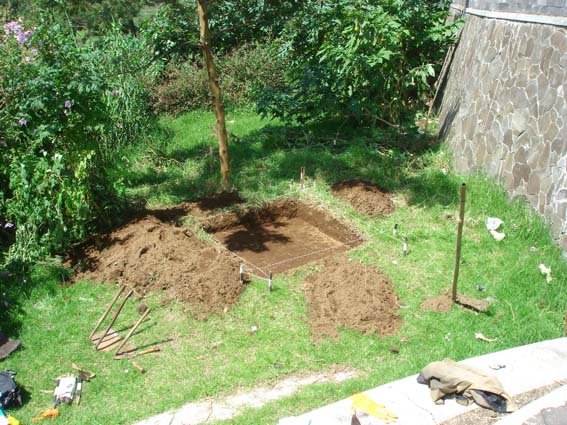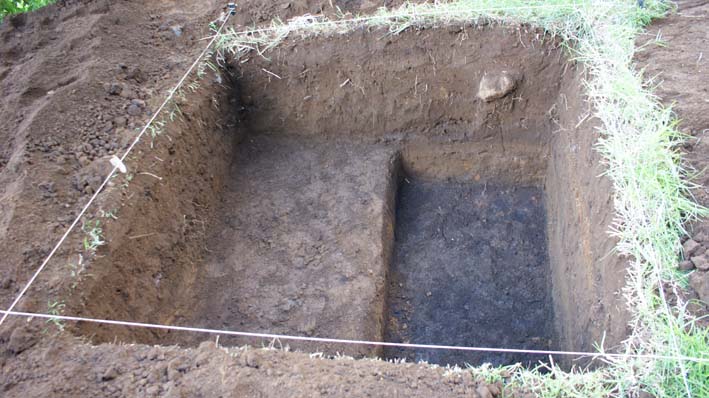Two units were excavated here: Squares B' i 6.9 and C'J 6.1.
Square B'i 6.9:
Unit B' i 6.9 was chosen because it was thought to consist of back dirt discarded from the parking lot in front of the museum courtyard in about 1977. Many fragments of imported ceramics had been found in that location.
Condition of the unit prior to excavation: overgrown with grass. The SOP was located 20 cm from the ground surface in corner T4. Spit 1 was fixed at 25 centimeters from the SOP. Finds in spit 1 constituted 11 shards of glass and modern ceramics mixed with rubbish. In spits 2 and 3 chunks of stone began to appear; trash became less common. One sherd of earthenware was found. Spit 4 was sterile. In spits 5 and 6 a layer of grayish white soil was revealed. A fragment of a roof tile was found in this layer. Spit 7 was sterile. Soil colour was dark. In spit 8 half the square only was excavated; soil was still dark coloured. Finds in the last spit excavated (186 cm from SOP) consisted of 2 earthenware fragments. Since no sherds thought to have been discarded from the construction of the parking lot were found, and the last two spits were sterile, the excavation was halted.

Finds in square B’i6.9:
Dataset: Modern
Dataset: Ancient Earthenware (B’i6.9)
Showing 0 of 0 total records in this dataset. See all.
Unit C’J 6.1
Reason for selecting unit: to locate the location of the spoil heap created when levelling the footpath near Candi Gatotkaca. Temporary datum point was located at corner T3, 20 cm above ground level.
The soil surface before excavation sloped west; ground cover consisted of gerinting grass. No surface finds were noted. Spit 1 was sterile. In spit 2 were found 4 earthenware fragments. Soil was damp with fragments of stone, gravel, and brick fragments. In spit 3 were found 3 stamped earthenware fragments, apparently fired at a high temperature. When spit 4 was begun, the unit was divided in half; T1 was excavated, T2 was not. No artifacts were found in spits 4 and 5. The soil type in spit 5 was brownish yellow loam. Excavation was stopped at the bottom of spit 6 (150 cm below datum point).
Dataset: Ancient Earthenware in Unit Cj6.1
Showing 0 of 0 total records in this dataset. See all.

This unit yielded promising results in the form of Javanese earthenware, but the last three spits were sterile.

